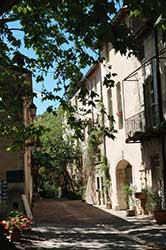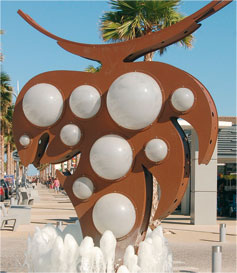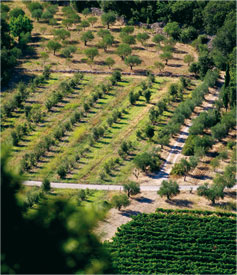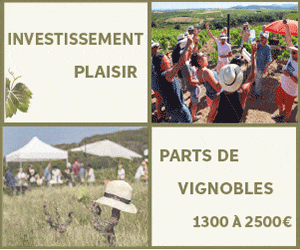Former capital of luxury silk stockings
It was during the Middle Ages that the town of Ganges started to flourish, and to that distant past dates the architectural physiognomy that still shapes the town today . The historical center , typical of medieval towns in the Cevennes region, is a labyrinthin e aggregate of narrow winding lanes, vaulted passageways, arches, hideen gardens and terraced courtyards. Today, several signposted walks, aptly named " chemins de traverse " will allow you to follow these twisting alleys on your way to visit all the sights of the town. In the course of the 16 th and 17 th Centuries Ganges has taken advantage of its stategic location and its organisation into a commune, and blossomed into a proper town with the prospects of a long period of prosperity ahead. The culture of white mulberry, at the base of silk production, was in full development. At the start of the 18 th Century the town, having specialised in luxury silk, became the producer by excellence of silk stockings, acquiring an international réputation for good quality.
e aggregate of narrow winding lanes, vaulted passageways, arches, hideen gardens and terraced courtyards. Today, several signposted walks, aptly named " chemins de traverse " will allow you to follow these twisting alleys on your way to visit all the sights of the town. In the course of the 16 th and 17 th Centuries Ganges has taken advantage of its stategic location and its organisation into a commune, and blossomed into a proper town with the prospects of a long period of prosperity ahead. The culture of white mulberry, at the base of silk production, was in full development. At the start of the 18 th Century the town, having specialised in luxury silk, became the producer by excellence of silk stockings, acquiring an international réputation for good quality.
But by the end of the 19 th century, after a series of crisis of the sericulture sector, the silk stocking industry was in decline. Today, Ganges a village of more than 5000 inhabitants, lives mainly on commerce and handicraft. The busy Friday market is symbolic of the town's modern role as a commercial and touristic carrefour. Its historical heritage and the natural beauty of its surroundings attract visitors of all ages looking for cultural or outdoors activities.







 23,8 °C
23,8 °C

